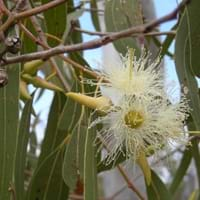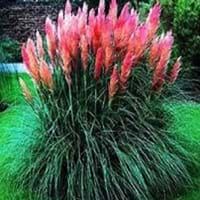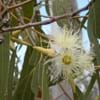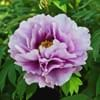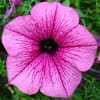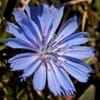Life Span
Perennial
Perennial
Origin
Australia
South America, Argentina
Types
Eucalyptus absita, Eucalyptus acies, Eucalyptus calycogona
Not Available
Number of Varieties
Not Available
Habitat
River side
All sorts of environments
USDA Hardiness Zone
9-10
7-11
AHS Heat Zone
10-1
12 - 7
Sunset Zone
5, 6, 8, 9, 10, 11, 12, 13, 14, 15, 16, 17, 18, 19, 20, 21, 22, 23, 24
H1, 3a, 3b, 4, 5, 6, 7, 8, 9, 10, 11, 12, 13, 14, 15, 16, 17, 18, 19, 20, 21, 22, 23, 24
Habit
Oval or Rounded
Arching/Fountain-shaped
Flower Color
Pink, Red, White
Pink
Flower Color Modifier
Not Available
Bicolor
Fruit Color
Yellow Brown
Non Fruiting Plant
Leaf Color in Spring
Dark Green
Green, Gray Green
Leaf Color in Summer
Gray Green
Light Green
Leaf Color in Fall
Gray Green
Green, Gray Green
Leaf Color in Winter
Gray Green
Green, Gray Green
Leaf Shape
Oval
long with sharp edges
Plant Season
Winter
Spring, Summer, Fall, Winter
Sunlight
Full Sun
Full Sun, Partial Sun, Partial shade
Type of Soil
Well drained
Loam, Sand
The pH of Soil
Slightly Alkaline
Acidic, Neutral, Alkaline
Soil Drainage
Well drained
Well drained
Bloom Time
Early Summer, Spring
Early Summer, Summer, Late Summer, Early Fall
Tolerances
Drought
Pollution, Salt, Soil Compaction
Where to Plant?
Ground
Ground
How to Plant?
Stem Planting
Divison, Seedlings, Transplanting
Plant Maintenance
Medium
Medium
Watering Requirements
Requires regular watering, Requires watering in the growing season, Use and maintain water-efficient soaker hoses, Water Deeply, Water twice a day in the initial period
Do not water excessively, Keep the ground moist but not water-logged
In Summer
Lots of watering
Lots of watering
In Spring
Moderate
Moderate
In Winter
Average Water
Average Water
Soil pH
Slightly Alkaline
Acidic, Neutral, Alkaline
Soil Type
Well drained
Loam, Sand
Soil Drainage Capacity
Well drained
Well drained
Sun Exposure
Full Sun
Full Sun, Partial Sun, Partial shade
Pruning
Prune for shortening long shoots, Prune if you want to improve plant shape, Prune ocassionally, Remove dead or diseased plant parts
Prune before Winter, Remove damaged leaves, Remove dead branches, Remove dead leaves
Fertilizers
All-Purpose Liquid Fertilizer
10-10-10 diluted liquid fertilizer, All-Purpose Liquid Fertilizer
Pests and Diseases
Canker, head rot, Mealybugs, Root rot
Free of serious pests and diseases
Plant Tolerance
Drought
Drought, moderate salt tolerance
Flower Petal Number
Single
Single
Fragrant Bark/Stem
Yes
No
Foliage Texture
Medium
Fine
Foliage Sheen
Matte
Matte
Attracts
Birds
Birds, songbirds, Wildlife
Allergy
Itchiness, Pain and fatigue, Respiratory problems
sneezing
Aesthetic Uses
Not Used For Aesthetic Purpose
Beautification, Informal Hedge, Mixed Border, Ornamental use, Showy Purposes
Beauty Benefits
Not Available
Not Available
Environmental Uses
Air purification
Air purification
Medicinal Uses
Burns, Cough, Fever, Joint pain, Pulmonary tuberculosis, Upset stomach
No Medicinal Use
Part of Plant Used
Leaves
Flowering Tips, Stem, Whole plant
Other Uses
Oil is used as an industrial solvent, Oil is used in mosquito repellents, Used in paper industry
Showy Purposes
Used As Indoor Plant
No
Sometimes
Used As Outdoor Plant
Yes
Yes
Garden Design
Not Available
Dried Flower/Everlasting, Feature Plant, Foundation, Hedges, Screening / Wind Break
Botanical Name
Eucalyptus
CORTADERIA selloana 'Carminea Rendatleri'
Common Name
Eucalyptus
Pampas Grass, Pink Pampas Grass
In Hindi
नीलगिरी
Pink Pampas grass
In German
Eukalyptus
Pink Pampas grass
In French
Eucalyptus
Herbe Pampas rose
In Spanish
Eucalipto
Hierba de color rosa Pampas
In Greek
ευκάλυπτος
Pink Pampas grass
In Portuguese
Eucalipto
Grama de Pampas rosa
In Polish
Eukaliptus
Różowy Pampas trawy
In Latin
Eucalyptus
Pink Pampas grass
Phylum
Magnoliophyta
Tracheobionta
Class
Magnoliopsida
Liliopsida
Genus
Eucalyptus
Cortaderia
Clade
Not Available
Not Available
Tribe
Eucalypteae
Not Available
Subfamily
Myrtoideae
Not Available
Number of Species
Not Available
Importance of Eucalyptus and Pink Pampas Grass
Want to have the most appropriate plant for your garden? You might want to know the importance of Eucalyptus and Pink Pampas Grass. Basically, these two plants vary in many aspects. Compare Eucalyptus and Pink Pampas Grass as they differ in many characteristics such as their life, care, benefits, facts, etc. Every gardener must at least have the slightest clue about the plants he wants to plant in his garden. Compare their benefits, which differ in many ways like facts and uses. The medicinal use of Eucalyptus is Burns, Cough, Fever, Joint pain, Pulmonary tuberculosis and Upset stomach whereas of Pink Pampas Grass is No Medicinal Use. Eucalyptus has beauty benefits as follows: Not Available while Pink Pampas Grass has beauty benefits as follows: Not Available.
Compare Facts of Eucalyptus vs Pink Pampas Grass
How to choose the best garden plant for your garden depending upon its facts? Here garden plant comparison will help you to solve this query. Compare the facts of Eucalyptus vs Pink Pampas Grass and know which one to choose. As garden plants have benefits and other uses, allergy is also a major drawback of plants for some people. Allergic reactions of Eucalyptus are Itchiness, Pain and fatigue and Respiratory problems whereas of Pink Pampas Grass have sneezing respectively. Having a fruit bearing plant in your garden can be a plus point of your garden. Eucalyptus has no showy fruits and Pink Pampas Grass has showy fruits. Also Eucalyptus is flowering and Pink Pampas Grass is not flowering . You can compare Eucalyptus and Pink Pampas Grass facts and facts of other plants too.
